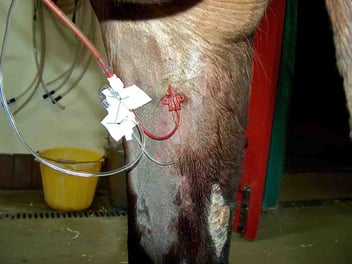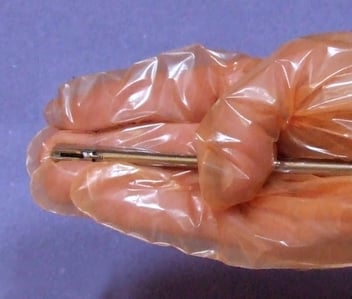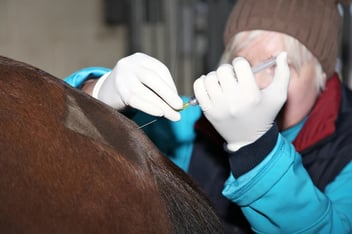Technique Tuesday - Lateral Thoracic Catheter
This Technique Tuesday, our co-founder and equine veterinary surgeon, Jennifer Corley, is sharing her expertise on the Lateral Thoracic Catheter. Have questions or comments? Drop them in the comment form below, and Jennifer will be more than happy to help! Stay tuned for more exciting insights and techniques.


Indications
If there is thrombosis in one jugular vein it is not recommended to use the other. The lateral thoracic vein offers a relatively simple and safe site as an alternative for a cannula.
Suitable catheters
14G single lumen 20cm (8 inch) over the wire catheter
16G single lumen 20cm (8 inch) over the wire catheter
14G 13cm (5.25 inch) over the needle polyurethane catheter
16G 13cm (5.25 inch) over the needle polyurethane catheter
Other equipment
Clippers
Scrub material
2-0 nonabsorbable monofilament suture on a straight needle
30ml heparinized saline
No 15 scalpel blade
Local anaesthetic (2% mepivacaine)
2ml syringe with 25G 1.6cm (5/8 inch) needle
Extension set
Injection cap
Adhesive bandage
Sterile gloves
Zinc oxide tape
Bandage scissors
Sedation (optional)
Twitch (optional)
Ultrasound (optional)
Anatomy
The lateral thoracic vein runs from just behind the elbow caudally along the wall of the ventral thorax. It can be hard to identify as it has a flat profile. It is possible to use a standard over the needle catheter but the vein is more easily catheterised using an over-the-wire catheter. Ultrasonography can be useful to find the vein. The vein is catheterised 20cm (8 inches) from the point of the elbow.
Technique
Hold off the vein cranially. It can be identified by raising and lowering the vein. The area for placement of the catheter is clipped and asceptically prepared. The catheter is placed pointing cranially (hub caudal, tip cranial). Local anaesthetic is used. When placing the needle a flat angle (10-20 degrees) should be used. Once the catheter and the extension have been placed they should be sutured into place and wrapped with an adhesive bandage.




